Muriel Spark (1918-2006) is considered by The Times newspaper to be amongst the 50 Best British Writers Since 1945. Her novels, short stories and plays explored Catholicism, fascism, the nature of good and evil – always with satire and wit. Martin Stannard, invited by Spark to begin to work on her biography in 1992, captured this elusive writer’s character in Muriel Spark: the biography.
Spark was born in 1918 to a Jewish father and Anglican mother. This sense of duality was a constant theme throughout her life. She was raised in Edinburgh, showing a precocious talent for literature and poetry. Since university was not a option, her route to escape was through a early marriage. This was an unfortunate choice for Spark. After they had moved to Rhodesia and she was already pregnant, she discovered that her husband had a psychiatric illness with violent tendencies. With steely determination, she left her young son behind (this was during World War II and there were strict rules about bringing children back to England) and returned to England to pursue her literary career. It was several years before her son was able to leave Africa. He was then left to be raised by Spark’s parents. This was to have lifelong consequences for both of them.
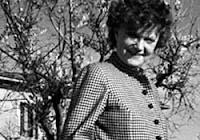 Stannard had his work cut out for him. Spark was intensely private. She did not keep a diary. She gave him access to her papers, letter and to herself. He interviewed friends and acquaintances. This will certainly be considered her definitive biography.
Stannard had his work cut out for him. Spark was intensely private. She did not keep a diary. She gave him access to her papers, letter and to herself. He interviewed friends and acquaintances. This will certainly be considered her definitive biography.
The essence of this biography is the exploration of character. Spark was a complex individual who lead a challenging life. She made unconventional decisions, choosing career over family. As a convert to Catholicism, she struggled with her Jewish upbringing. She had a desire for a solitary life, yet still needed protection and companionship. She had a difficult time balancing these needs, often alienating the people who meant her well. This biography is thoughtfully written with much consideration given to her friendships and her business relationships.
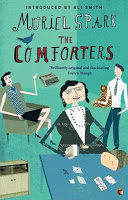
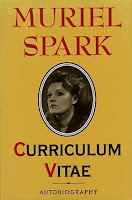 In 1992 Spark wrote Curriculum Vitae. This memoir covers her formative years ending in 1957 with the publication of her first novel The Comforters. This is an interesting read in itself, but the intensely private Spark does not give a great deal of insight into her choices and does skim over the more difficult parts of her life a bit. Interestingly, meticulously thorough, she only wrote about details she was able to verify.
In 1992 Spark wrote Curriculum Vitae. This memoir covers her formative years ending in 1957 with the publication of her first novel The Comforters. This is an interesting read in itself, but the intensely private Spark does not give a great deal of insight into her choices and does skim over the more difficult parts of her life a bit. Interestingly, meticulously thorough, she only wrote about details she was able to verify.

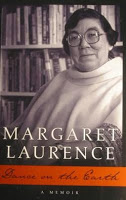 Compare with Dance on the Earth: a memoir by Margaret Laurence. In The Life of Margaret Laurence by James King, King refers to her memoir as “deliberately evasive”. Laurence and Spark shared an early unhappy marriage, the struggle between an artistic life and the demands of family, a sojourn in Africa, single-minded determinism and sensitivity to criticism.
Compare with Dance on the Earth: a memoir by Margaret Laurence. In The Life of Margaret Laurence by James King, King refers to her memoir as “deliberately evasive”. Laurence and Spark shared an early unhappy marriage, the struggle between an artistic life and the demands of family, a sojourn in Africa, single-minded determinism and sensitivity to criticism.
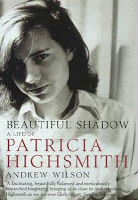 While not as carefully crafted perhaps, there is also A Beautiful Shadow: a life of Patricia Highsmith by Andrew Wilson. From a Publishers Weekly review, “The biographer’s exhaustive attention to detail coupled with his access to Highsmith’s journals (or “cahiers,” as she called them) and letters, and extensive interviews with her friends, lovers and associates, allow him to reveal in excruciating detail this very private person. Highsmith emerges as a woman of great intelligence, candor and curiosity, but also as a racially prejudiced, anti-Semitic and insensitive boor. She was an acute observer capable of seizing a single incident and transforming it into a complex story. But she was unable to transform her own unhappy life. Instead she transmuted her troubles, her experiences, her observations into her work.”
While not as carefully crafted perhaps, there is also A Beautiful Shadow: a life of Patricia Highsmith by Andrew Wilson. From a Publishers Weekly review, “The biographer’s exhaustive attention to detail coupled with his access to Highsmith’s journals (or “cahiers,” as she called them) and letters, and extensive interviews with her friends, lovers and associates, allow him to reveal in excruciating detail this very private person. Highsmith emerges as a woman of great intelligence, candor and curiosity, but also as a racially prejudiced, anti-Semitic and insensitive boor. She was an acute observer capable of seizing a single incident and transforming it into a complex story. But she was unable to transform her own unhappy life. Instead she transmuted her troubles, her experiences, her observations into her work.”



